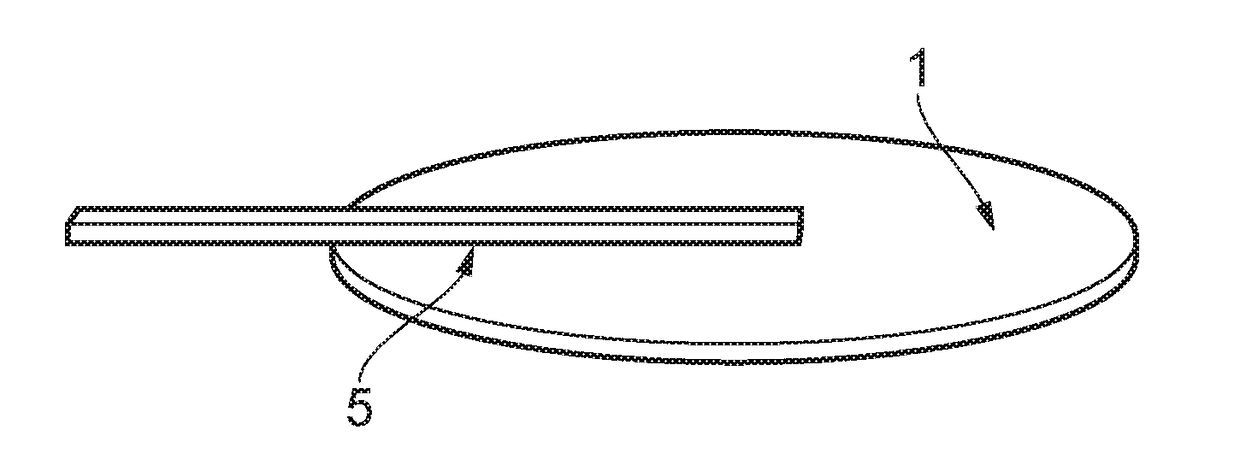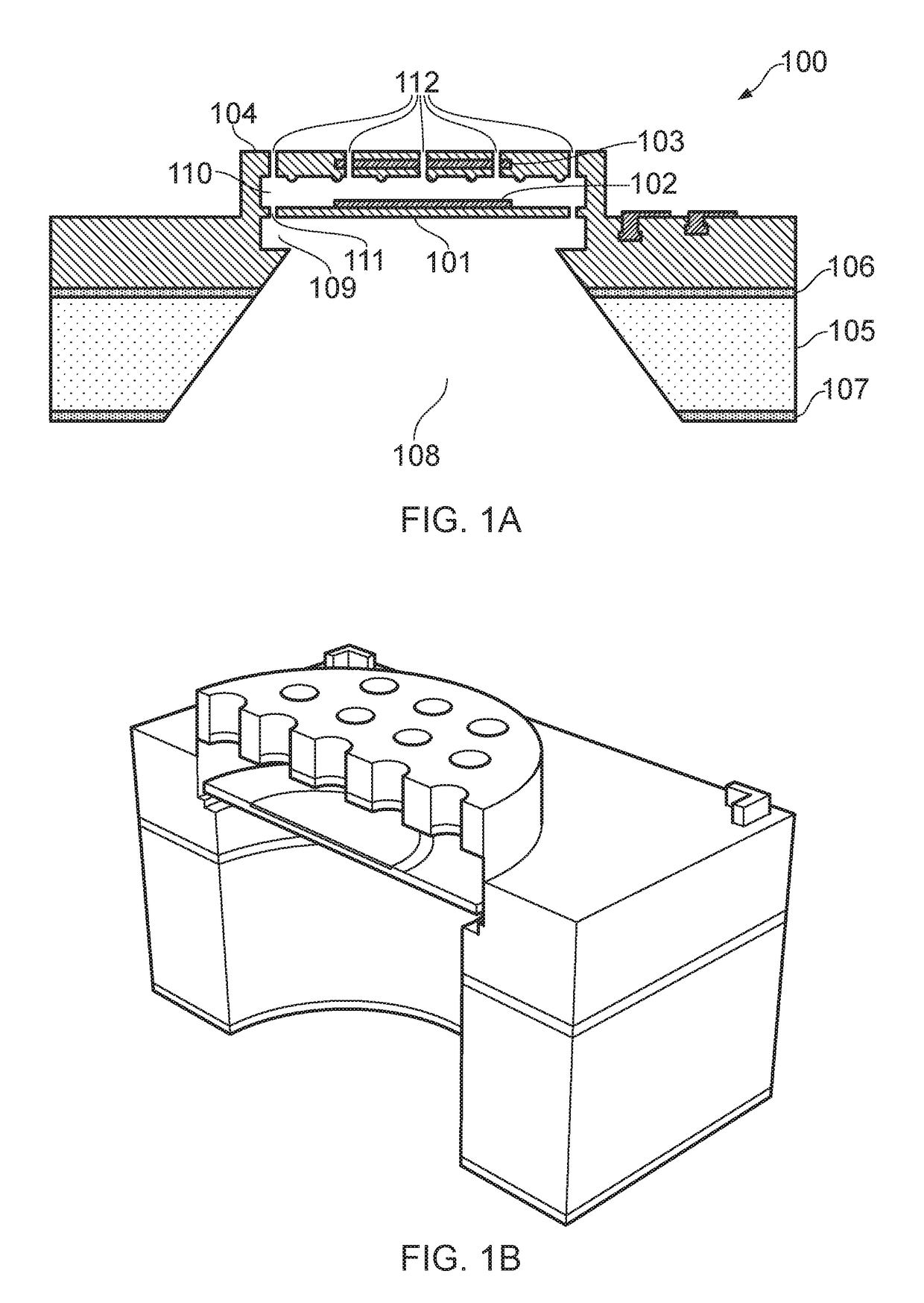Flexible membrane
a flexible membrane and membrane technology, applied in the field of flexible membranes, can solve the problems of limiting the acoustic performance of known mems capacitive microphone devices, reducing the quality of detected sound, etc., and achieves the effects of strengthening the membrane, simplifying the formation process, and reducing the cost of the devi
- Summary
- Abstract
- Description
- Claims
- Application Information
AI Technical Summary
Benefits of technology
Problems solved by technology
Method used
Image
Examples
embodiment 1
Optical Microphone Embodiment 1
[0116]FIG. 11A shows a flexible membrane 1 and electromagnetic waveguide 5 terminating in an electromagnetic wave diverter 6 for use in an optical microphone configuration in accordance with a first optical microphone configuration embodiment (Embodiment 1). The operating principle is shown in FIG. 11B. This example utilises a configuration similar to that of a Fabry-Pérot interferometer. In this example, the light that has propagated along the electromagnetic waveguide is diverted by an electromagnetic wave diverter 6 (not shown in FIG. 11B), such that the electromagnetic wave is emitted from the waveguide. In the example shown in FIG. 11A, the electromagnetic wave diverter is configured to divert the electromagnetic waves through an angle of approximately 90°, such that waves which were previously propagating through the waveguide approximately parallel to a planar surface of the flexible membrane (and along a primary axis of the waveguide) are coupl...
embodiment 2
Optical Microphone Embodiment 2
[0122]In the second optical microphone embodiment (Embodiment 2), the overall configuration of the optical microphone system is similar to that of Embodiment 1. As in Embodiment 1, the light that has propagated along the electromagnetic waveguide is diverted by an electromagnetic wave diverter 6, such that the electromagnetic wave is emitted from the waveguide However, rather than being configured to divert the electromagnetic waves through an angle of approximately 90°, such that waves propagate normal to the plane of the flexible membrane, the diverter 6 is configured to couple the electromagnetic waves out of the waveguide, and thus divert the electromagnetic wave out of the plane of the flexible membrane at an angle other than 90°. The diverted wave propagation vector accordingly has a component parallel to the surface of the flexible membrane, in addition to having a component normal to the surface of the flexible membrane. Therefore, the reflecte...
embodiment 3
Optical Microphone Embodiment 3
[0133]A plan view of a flexible membrane and electromagnetic waveguide in accordance with a third optical microphone configuration embodiment (Embodiment 3) is shown in FIG. 14A. In this embodiment an electromagnetic wave enters the electromagnetic waveguide that is a component of the flexible membrane, as is the case in Embodiments 1 and 2. However, the electromagnetic wave does not encounter a diverter. Instead, the electromagnetic wave is incident upon a planar surface 53 of the electromagnetic waveguide that is perpendicular to the direction of propagation of the electromagnetic wave through the waveguide. This planar surface 53 is then followed (in the direction of propagation of the electromagnetic wave) by a space 55, and then by a contact member 57. In Embodiment 3, the contact member is a further electromagnetic waveguide, however different configurations of contact member can be used, and further embodiments are discussed below. In FIG. 14A, ...
PUM
| Property | Measurement | Unit |
|---|---|---|
| wavelengths | aaaaa | aaaaa |
| wavelengths | aaaaa | aaaaa |
| wavelengths | aaaaa | aaaaa |
Abstract
Description
Claims
Application Information
 Login to View More
Login to View More - R&D
- Intellectual Property
- Life Sciences
- Materials
- Tech Scout
- Unparalleled Data Quality
- Higher Quality Content
- 60% Fewer Hallucinations
Browse by: Latest US Patents, China's latest patents, Technical Efficacy Thesaurus, Application Domain, Technology Topic, Popular Technical Reports.
© 2025 PatSnap. All rights reserved.Legal|Privacy policy|Modern Slavery Act Transparency Statement|Sitemap|About US| Contact US: help@patsnap.com



